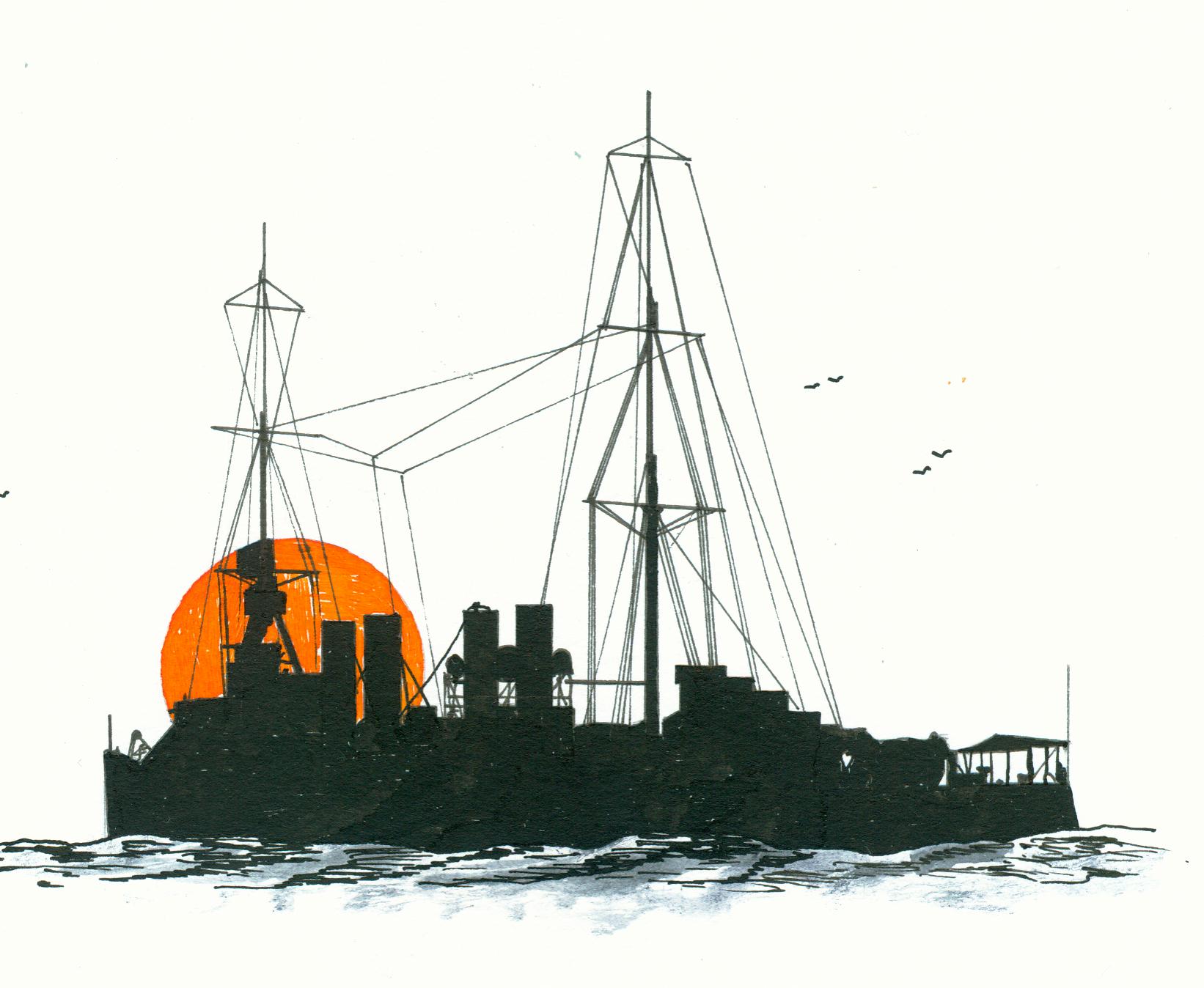Omaha-class
USS Omaha
Part of the Omaha-class light cruisers consisting of the Omaha (CL-4). Milwaukee (CL-5). Cincinnati (CL-6), Raleigh (CL-7). Detroit (CL-8), Richmond (CL-9). Concord (CL-10), Trenton (CL-11), Marblehead (CL-11) and Memphis (CL-13), preceded by the Chester-class and succeeded by the Brooklyn-class. The Omaha-class was the American answer on the British Centaur-class which was in fact a subclass of the C-class cruisers. Despite the fact that both countries were not in war, both were rivals in controlling the Atlantic Ocean. Designed as a scout cruiser used in the interbellum as flagships for anti destroyer fleet flotillas. The Omaha-class was despite their seagoing qualities not an overall success. There was a modified design made with a rearranged gun armament which was to consisted of 4x2-15,2cm/6” guns (2 turrets fore and 2 aft). Further more was one design in which the cruiser was in fact converted into a monitor with as main armament 2x1-35,56cm/14” guns and one design with a main armament of 2x2-20,3cm/8” guns. This last design was used by designing the Pensacola-class heavy cruisers.
General technical class specification.
With a displacement of 7.160 tons and as dimensions 169,62 x 16,87 x 6,10 metres or 556’6” x 55’4”x 20’0”. The 4 Parsons steam turbines and 12 Yarrow boilers supplied 90.000 shp allowing a speed of 35 knots. With a speed of 10 knots was the range 9.000 nautical miles. The crew numbered 360 men. The armour consisted of a 3,8cm/1.5” thick deck, a 7,6cm/3” thick belt, 3,8cm/1.5“-7,6cm/3“ thick bulkheads with the conning tower protected by 3,8cm/1.5‘. The armament consisted of 8x1&2x2-15,2cm/6” 53 cal guns, 4-7,6cm/3” /50 cal guns and 2x3&4x2-53,3cm/21” torpedo tubes. Originally also 224 mines. Two floatplanes for which amidships 2 catapults and a crane were available. In 1945 consisted the armament of 6x1&2x2-15,2cm/6” 53 cal guns, 8-7,6cm/3” 50 cal anti aircraft guns, 6x3-53,3cm/21” torpedo tubes, 3x2-4cm/6” Bofors guns and 12x1-2cm/0.79” Oerlikon cannons.


